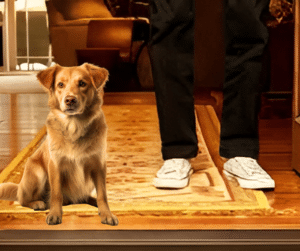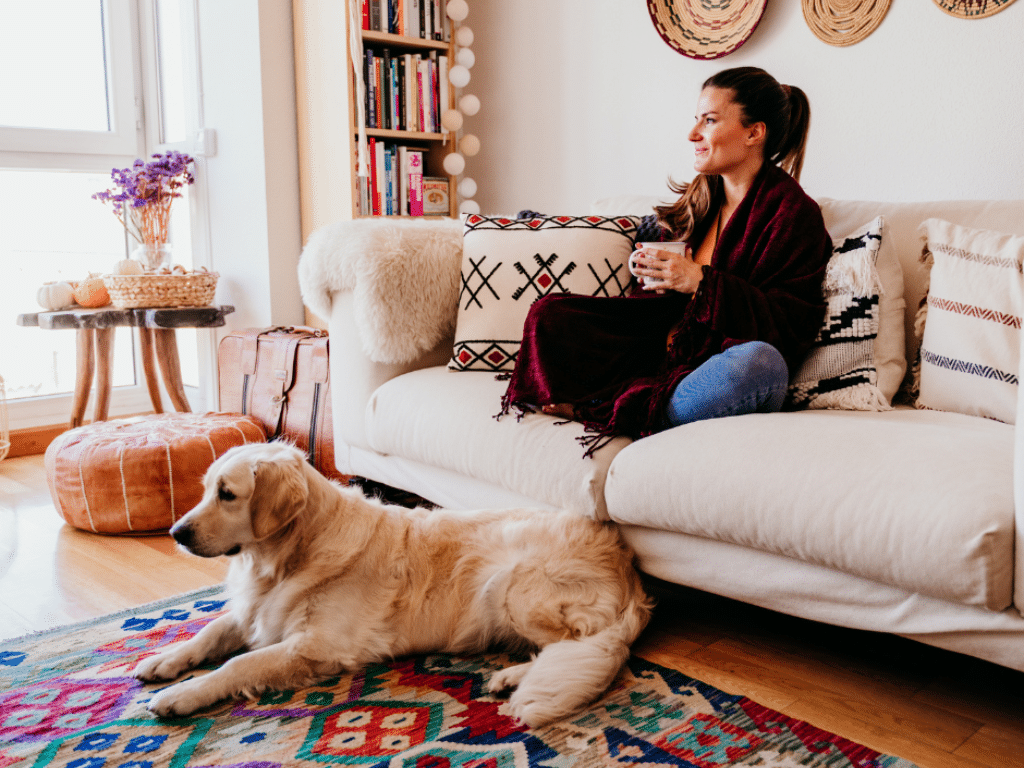Introduction
Training your dog can be a rewarding yet challenging experience, especially when unexpected situations arise. Whether it is the doorbell ringing or an unplanned visitor, these surprises can disrupt your dog’s focus and training progress. In this article, we will explore effective strategies to handle such surprises, ensuring a smoother training journey for both you and your dog. Our aim is to help dog owners in Hamilton build confident and well-behaved dogs, equipped to handle any unexpected situation.
1. Understanding Your Dog’s Reactions
Why Dogs React to Unexpected Stimuli
Dogs are naturally curious and protective animals. When they encounter something unexpected, like a sudden noise or an unfamiliar visitor, their instinct is to react. This reaction can range from barking and jumping to running or hiding. Understanding these natural instincts is the first step in managing your dog’s behaviour during training.
Common Reactions to Unexpected Situations
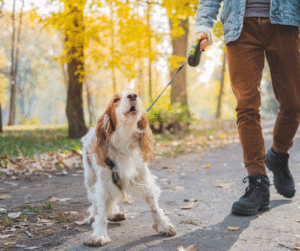
- Barking: A primary way dogs alert their owners to something unusual.
- Jumping: Often a reaction to excitement or anxiety.
- Running/Hiding: A fear-based response to perceived threats.
- Aggression: In some cases, dogs may react aggressively to protect their territory.
Recognizing these reactions and understanding why they occur is crucial in developing an effective training plan.
2. Preparing for the Unexpected
Creating a Controlled Training Environment
A controlled environment is essential for successful dog training in Hamilton. Start by minimizing potential distractions in your training area. This could mean training indoors where you can control the level of noise and activity. Ensure the space is safe and free from hazards that could further startle your dog.
Incorporating Distractions Gradually
To prepare your dog for real-life situations for your dog training in Hamilton, gradually introduce distractions during training sessions. Start with mild distractions, such as background music or a family member walking by. As your dog becomes more comfortable, increase the complexity of distractions, like a friend ringing the doorbell.
Using Desensitization Techniques
Desensitization involves exposing your dog to a stimulus at a low intensity and gradually increasing it as your dog becomes more accustomed. For instance, if your dog reacts strongly to the doorbell, play a recording of a doorbell at a low volume while rewarding your dog for staying calm. Gradually increase the volume over several sessions.
3. Responding to the Doorbell: A Step-by-Step Guide
Step 1: Stay Calm and Composed
Your dog looks to you for cues on how to react. If you remain calm and composed during unexpected situations, your dog is more likely to follow suit. Practice maintaining a calm demeanour during training sessions, even when distractions occur.
Step 2: Training the ‘Place’ Command
The ‘Place’ command trains your dog to go to a designated spot and stay there until released. This is particularly useful when the doorbell rings.
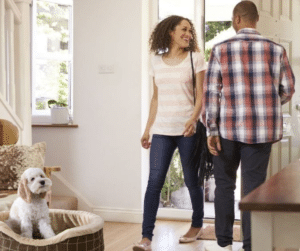
Step-by-Step Guide:
- Choose a Spot: Select a comfortable spot for your dog, like a bed or mat.
- Introduce the Command: Lead your dog to the spot and say, “Place.” Reward them with a treat when they comply.
- Extend Duration: Gradually increase the time your dog stays in the spot before giving the release command.
- Add Distractions: Practice the command with increasing distractions, such as ringing the doorbell.
Step 3: Simulating Real-life Scenarios
To make the training effective, simulate real-life scenarios. Have friends or family members ring the doorbell during training sessions. Reward your dog for staying calm and following commands. This will help your dog understand that the doorbell ringing is not a reason to panic.
4. Reinforcement and Consistency
Importance of Positive Reinforcement
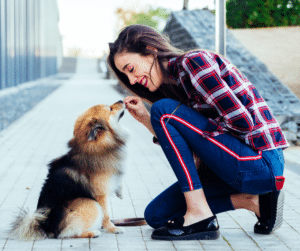
Positive reinforcement is a powerful tool in dog training in Hamilton. Reward your dog with treats, praise, or playtime for good behaviour. This reinforces the behaviour you want to see repeated.
Consistency in Commands and Actions
Consistency is key to effective training. Use the same commands and actions every time an unexpected situation occurs. This helps your dog understand what is expected of them.
Regular Practice and Patience
Regular practice is essential for long-term success. Schedule daily training sessions to reinforce your dog’s learning. Be patient and persistent, as some dogs may take longer to adjust to new routines.
5. Common Mistakes to Avoid
Reacting with Frustration or Anger
Dogs are sensitive to their owner’s emotions. Reacting with frustration or anger can confuse and scare your dog, hindering their progress. Stay calm and composed, even if the training session is not going as planned.
Inconsistency in Training
Inconsistent training can lead to confusion and slow progress. Ensure that everyone in the household uses the same commands and rewards the same behaviours.
Overloading Your Dog with Too Many Distractions at Once
Introducing too many distractions at once can overwhelm your dog. Gradually increase the complexity of distractions to build their confidence and focus.
6. Advanced Tips for Handling Other Unexpected Situations
Visitors Arriving Unexpectedly
When unexpected visitors arrive, instruct your dog to go to their ‘Place.’ Practice this scenario with friends or family members to ensure your dog remains calm and composed.
Loud Noises or Sudden Movements
Dogs may react strongly to loud noises or sudden movements. Use desensitization techniques to help your dog become accustomed to these stimuli. Play recordings of common noises at a low volume and gradually increase the volume over time.
Encountering Other Animals
When encountering other animals unexpectedly, maintain control of your dog using commands like ‘Sit’ or ‘Stay.’ Reward your dog for remaining calm and focused on you.
Conclusion
Handling unexpected situations during dog training can be challenging, but with the right strategies and consistent practice, it is possible to train your dog to stay calm and focused. Understanding your dog’s reactions, preparing for the unexpected, and using positive reinforcement are key to successful training. Remember to be patient and persistent, and soon your dog will be well-equipped to handle any surprise that comes their way.
- Name: K9 Principles
- Address: Haldimand County, Greater Hamilton Area, Burlington and Most of Norfolk County
- Phone: 289 880-3382
- Email: k9principlesinc@gmail.com
- Website: www.k9principles.ca
FAQs
-
If your dog does not respond to the ‘Place’ command, revisit the basics. Ensure you are using high-value treats and practicing in a distraction-free environment. Gradually reintroduce distractions once your dog understands the command.





